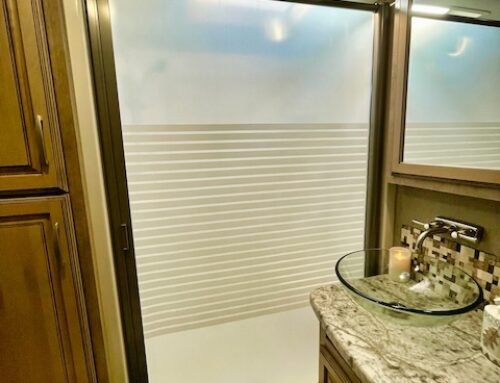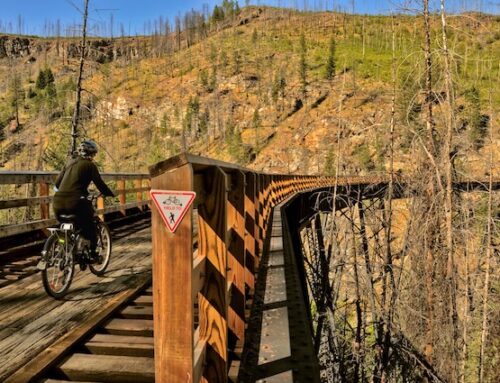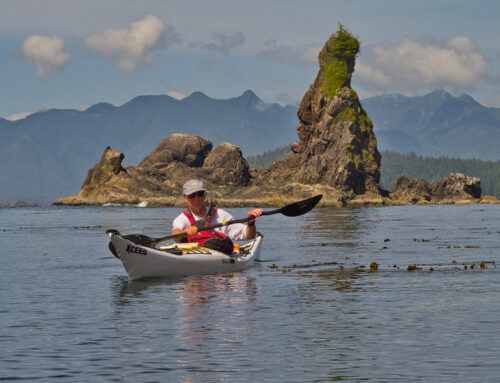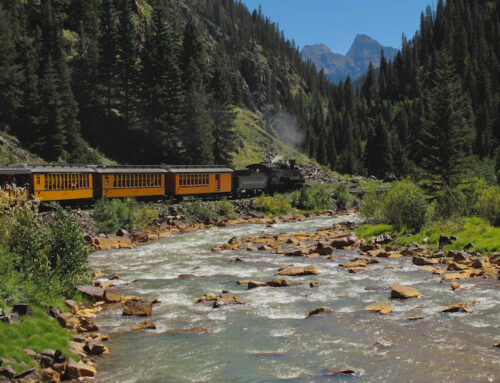Wet is not always wonderful!
If you’ve ever spent long stretches of time in an RV … you’ve probably run into moisture problems.
Even with well-insulated units there will always be a problem with warm air on one side of the wall and cool or cold air on the
other. You always have to be a bit more diligent about wiping down showers after use and always running the fan over the stove when cooking; plus not bringing in dripping wet clothes or anything else that brings extra moisture into the unit.
In our case, we live full time in our unit and we winter in Victoria, BC where it’s not excessively cold but still runs around 0C – 7C (or 32F – 45F). We find areas that are more closed in than others (such as around the sofa or behind the easy chairs) can end up with moisture on the walls. We’ve solved a lot of this problem by leaving our overhead fan going constantly in the slow mode … this serves to keep the air moving just enough to stop moisture from accumulating in most places.
However … in our bedroom it’s another matter altogether. In our Heartland Big Country 40’ 5th
wheel our bed is on a slide with 3 sides of the bed actually touching the walls of the slide. The standard layout of the room is with a king-sized bed and boy is it jammed in there!
Because of this there is no air movement at all on those sides. During the winter months the sheets that are touching the walls are actually wet! We’ve also found lately that underneath the bed – on my husband’s side only as he ‘sleeps hotter’ than me – the supporting board under the mattress is also moist! In fact so moist that the board (OSB or particle board) had started to de-laminate and actually warp!
Our first attempt to solve the problem was to insulate under the board but that didn’t help at all.
We finally came up with a solution that seems to have solved the problem.
First we unscrewed the old 5/8″ OSB from the bed box frame and replaced it with 3/4” plywood (good one side). We cut it narrower than the original (as we think in the future we’ll change to a queen sized mattress to give ourselves more room AND make it easier to change the linens).
Then we cut holes (2 on each side and about a 2” diameter) into the box underneath the supporting board (up near the head of the bed) which houses the mechanism for the slide.
Next we installed an air dryer with a fan/dehumidifier into that open space in the box. We found this
little unit at a marine supply store but have found since then that it’s also available on Amazon (see below). We had previously used it in our Class C during winter storage to prevent moisture buildup. It’s small and compact & uses very little energy. It makes no noise so it’s not an issue under the bed. We plug it into an outlet on the bed which we access through one of the cut holes.
The result? No more moisture problems either on the sides or bottom of the mattress, which re-inforces my belief that air circulation is the key to prevent moisture problems in your RV!
For more information and buying guide, please check out this dryer on Amazon
Davis Instruments Air Dryer
for good prices – you’ll be glad you did!
January 8th … up-date to above post:
We are still noticing moisture on the sheets where the mattress contacts the 3 walls. Not nearly as much but still some. No moisture underneath the mattress.
This re-inforces our decision to change to a queen-sized mattress. It will not only allow the air to circulate around the walls and mattress, but it will give us a bit more room to walk around in. Not that we are big people … but it’s still tight! In addition, it will make changing sheets less of an Olympic sport!











Leave A Comment